#Nihongo notebook
Explore tagged Tumblr posts
Text
My JLPT N1 Study Method (& Plan)
9/25/2023
As my introduction said, I'm trying to pass N1 by the next JLPT exam which is in this December! In this post, I will share how I study or prepare for N1
Books I Bought
Nihongo Sou Matome Vocabulary N1
TRY! 日本語能力試験N1
GO! JLPT N1 Grammar(Translated from Shin Kanzen Master i hate the renaming sm)
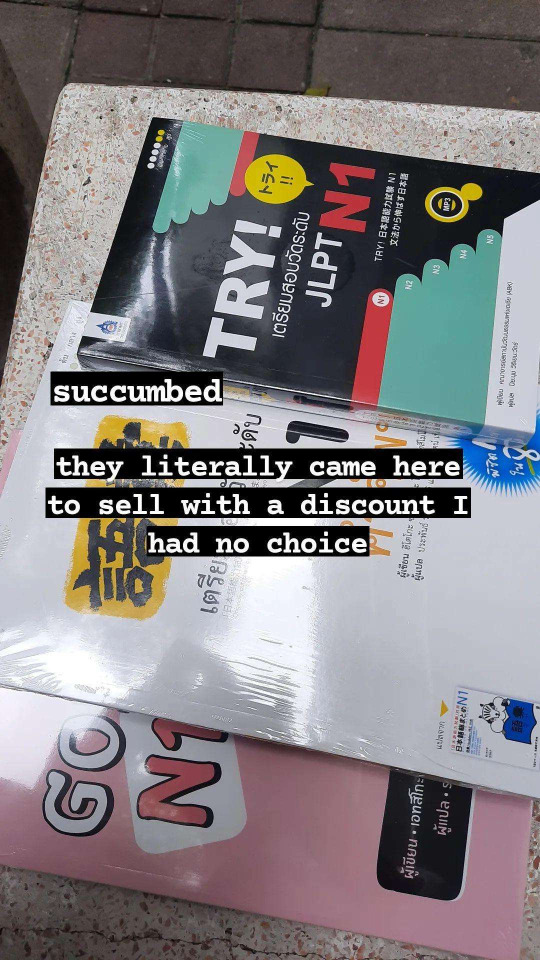
They are translated into Thai.
If you want to improve your Japanese understanding, people might recommend buying the Japanese version when you are at an intermediate level. But personally, I can completely understand it better when it's explained in my mother tongue, hence the reason why I bought them (plus I'm broke)
I bought them 2 months ago!
I start with TRY! and Sou Matome by reading the vocabs first from Sou Matome, then move on to TRY! doing their exercise as much as my brain can handle, usually not over a chapter.
Here's what my notebook looks like
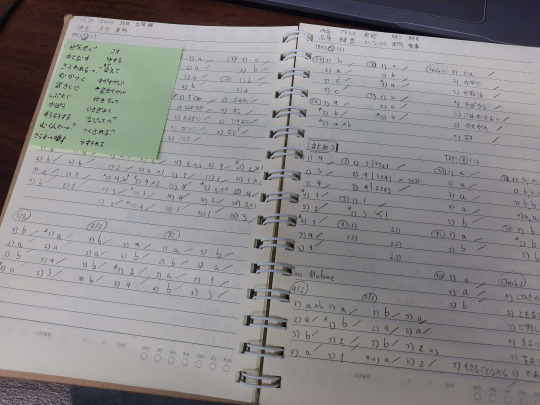
As you can see, nothing fancy– just a pencil and a sticky note. I write words I don't or barely understand at the top of every page. As for the sticky note, it's for the words from the seventh day of Sou Matome that I can't remember their meanings. You might notice I didn't write their meanings. It's because I want to challenge myself to recall their meanings without relying on written translations.
I also READ the TRY! book in advance, so I'm always ahead of my actual exercise. Why you may ask? It came from when I read the N4 book. I always carried it everywhere because reading it was fun! So I'm trying to keep up this habit (despite taking more effort than before). When I read sample sentences, I try to translate them into Thai by myself before looking at the translations, because I want to practice my interpretation/translation skills too! (It'll definitely be useful in the future).
After finishing TRY! I will start reading GO! JLPT. Hopefully, I can finish this before the exam date.
OH! One thing I forgot to mention, I haven't done the listening exercises in TRY!. The reason is simple, it's a bit of a hassle to use a DVD player so I want to do them altogether when I am done reading GO! JLPT. I use Kanji Study (Play Store only) for studying Kanji. Right now, I'm studying secondary 3's kanjis. Believe it or not, it has been a year since I started learning secondary 3 and never managed to make progress.
Future Plans
There can be a rare case where I finish these books earlier than I expect so here's what I should do (by that, I mean you definitely should because god those books don't cover the skill adequately)
日本語能力試験 対策問題&必点整理 読解 N1 This book is incredible imo, because it explains the answers to every question which made me thoroughly understand it when I was studying for N2
Shin Kanzen Master 聴解 N1
These will be the books I borrow from my university's library. They are in Japanese too that's why I love borrowing from here! I think the CD resource can be found online because that's what I did for N2.
Lastly, if there is still time I'll take a mock exam from the official JLPT handbook.
AAAA Thank you for reading again. I will try to use this blog for archiving my knowledge and stuff like this more. See you in the next post!
5 notes
·
View notes
Text
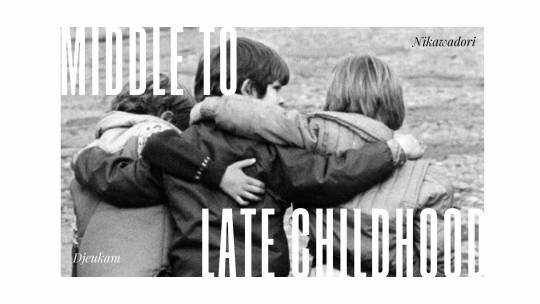
Middle to late childhood takes place at 6 to 11 years of age. In this period of development, children have now further developed their physical, cognitive, and socioemotional aspects of development. In the past interviews, we had only asked about the children from their caregiver’s perspective. Now, starting in this period, we will be interviewing individuals on each developmental period.
Meet "Haru"
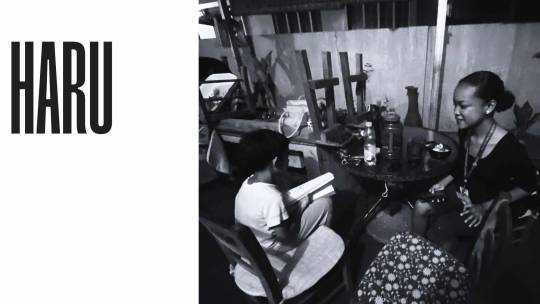
Haru is an 8-year-old kid who is in his 3rd grade in elementary school. We asked Haru questions with regard to his physical, cognitive, and socioemotional milestones and also made an observation of his behavior and actions throughout the interview.
At first, Haru was shy, just like Mavi in the previous interview in early childhood. However, unlike Mavi, Haru warmed up to us easily. He entertained our “warm-up” questions when asked about the slime he was working on. He then went on to make slime for us and also asked us to solve his Rubix cube. Much to his dismay, we did not know how to solve it. The interview did not begin for about 20 minutes as we let the child warm up to us before we proceeded to the questions.
Physical
Haru likes playing sports, especially basketball. He usually plays basketball with his school friends. According to him, he was always able to shoot the ball on the basketball ring despite how tall the ring was compared to him. He has a lot of friends, ranging from elementary to senior high school, grade 11, according to him. Among them, his friends from grade 3 and grade 4 are the ones he usually plays basketball with. Aside from playing basketball, he also plays other games with his friends, such as racing. And among the friends he plays this game with, he would always come 3rd. In addition, Haru stated that he was the fastest in racing among his girl friends. Haru also likes to ride his bicycle. Upon asking about this, Haru’s eyes lit up, and told us a story where he stumbled as he rode his bicycle and hit the neighbor’s parked car. This resulted in him wounding his mouth. He also told us that he knows how to ride a bike that is taller than him. This made us reflect on one of the lessons in this subject that at 5 years of age or more, children are even more adventurous and love to play vigorously. Thus also exercising their bodies.
We have noticed that despite Haru’s age, he was small. Thus, when asked about who was the tallest and the smallest in his friend group, Haru said that he was the smallest among them. Also according to him, the tallest in their friend group was already as tall as one of the interviewers, Mayumi. Haru also told us that he was often teased due to his height, calling him “Hi, gamay”, and he would playfully punch them if they ever did so. Though he might be small for his age, children at this age continue to grow and develop, as every one’s pacing of development is different. He might be small now, but there is a possibility of him growing twice his current size.
Cognitive
Haru’s favorite subjects in class are Nihongo and Math. As we were about to ask further questions regarding this, he walked off and grabbed his notebook in nihongo to show to us. However, the child got distracted and began to answer his assignment. Thus the interview was halted for a few minutes as his attention had shifted from us to his assignment. As he was attending to his Nihongo subject, we noticed that he knows how to write well in Nihongo, such as the words “mountain”, and “bird”, and he also knows how to count in Nihongo. After about a few minutes, we were able to get back to asking Haru questions, this time, about math. Despite not excelling in the said subject, Math was still Haru’s favorite subject. Then, we assessed his knowledge in math by asking him some equations in addition and multiplication. He was able to answer the questions with ease. Thus we disagree with his statement about him not excelling in math because he was able to answer us during the quick assessment. Whenever Haru was having a hard time solving mathematical equations, his strategy was to use sticks and count them in order to get the answer. Also, he would ask the help of his teacher whom he calls “Sensei”. Science has also gained interest and new knowledge in the subject of Science since it was what they had discussed in their class prior to our interview.
Socioemotional
Haru made friends easily and was the one who would initiate conversations with people who he wanted to become friends with. Whenever he wanted to make new friends, he would come up to the person and say “Who are you?” in a playful manner.
Conflicts would also arise at ages like Haru’s, especially among friends. When Haru gets angry, what he does is isolate himself from his friends and just sit until his anger subsides. He is not the type of person to lash out his anger at someone. Instead, he would tell his teacher about it. For us interviewers, it amazes us how at such a young age of 8, Haru can regulate and control his emotions, most especially such strong emotions as anger. But then, this situation made us reflect on what we have read in our book that children in elementary years are able to control their emotions even though they are still in the process of developing them.
Overall, Haru was very interactive with us and immediately warmed up to us even when this was the first time we had seen each other. Though he had warmed up, we noticed that he was still shy to come closer to us and would prefer having distance between us. But there were times when he would come closer to us, especially when talking about the things he liked like riding his bicycle, Nihongo.
DOCUMENTATION
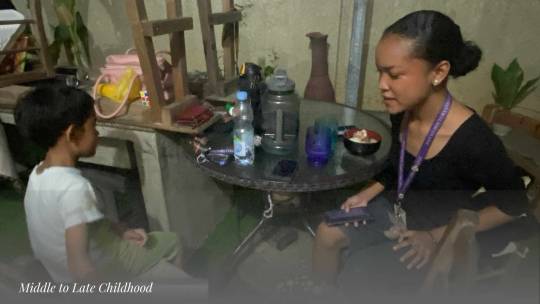
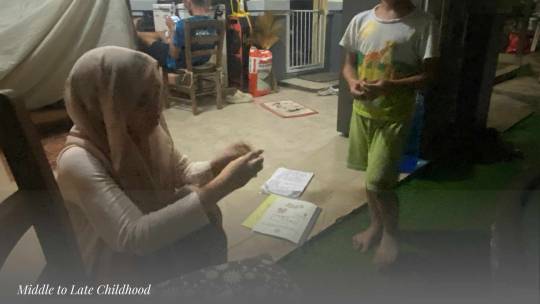

0 notes
Text
My notebooks, with the exception of kanji drilling notebooks, have usually been digital handwritten on iPad. I mainly wrote down my grammar notes in a load of different colours to help me review and I was also writing a lot of sentences for learning grammar - I would go through a chapter of grammar in a textbook (i used Minna no Nihongo), then write 5-10 sentences with the grammar I just learned. This is pretty much the only thing I have ever handwritten for future reference. Just about everything else I would write for practice and never look at ever again :)
For kanji, I practiced with flashcards and would handwrite them at the same time. So i would test myself on both jp>en and en>jp and would handwrite it when it came up on the english side - this worked a lot better for memorizing how to write kanji than just writing lines and lines and lines of them, which was very boring to me and I would zone out. I have never kept notes about on and kun readings and stroke order - I would find the stroke order online, and after a while I had memorized the rules for stroke order so I stopped looking it up except specifically in cases where something didn’t make sense. With on and kun readings, the truth is I am just lazy, so I never memorized them individually and only learned kanji with vocabulary. This honestly made it a bit easier when I got more advanced and started encountering a ton of words with irregular readings (much of the N1 kanji questions are exactly that). And my vocab lists were all in my flashcard apps - anki and shirabe jisho - so I didn’t feel the need to have them written anywhere else.
About writing texts, I didn’t write any when I was self studying, because I didn’t want to make mistakes without knowing. I only wrote texts when I had classes and had teachers to correct them, or when I had Japanese friends around to look at them (which was a godsend when i had to write emails in Japan ;;). For classes, teachers would usually have us write on genkoyoushi, I recommend trying to write on genkoyoushi at least a few times cause it feels very nice haha. In all honesty most of the full texts I’ve written have been typed up.
I went through a stage where I was insecure about my handwriting because I’m used to making my notes in English look pretty so I watched some Japanese youtube videos on how to improve, and I switched to doing my kanji practice in pen, which helped a lot. My digital handwriting is still not ideal, though when I was preparing for the N1 in december I was writing down so much stuff and so quickly that I kind of stopped caring about that I guess.
I don’t know if this is exactly helpful or answers the question, but that’s my experience with writing in Japanese!
Jp learners, how do you guys go about using a notebook? How do you practice writing? I bought a new notebook recently to practice writing in Japanese, but I don't really know how to start. I can already output a little digitally and recognize a fair ammount of kanji, but I've never really taken notes before.
I do immersion learning, so I'm thinking of attempting like, a semi daily diary for writing simple stuff? Idk I'd like to hear what other people are doing for writing practice!
#japanese langblr#language learning#writing in japanese#learning japanese#studyblr#japanese studyblr
135 notes
·
View notes
Video
youtube
WOOT!! The book in the video https://amzn.to/3dzIjUe
Disclosure: The Amazon Link contain affiliates. When you buy through the link we may receive a commission. Who knows, I don’t. This is at no cost to you. Thank you for supporting MonnieBiloney :3
#japanese learning#japanese#nihongonote#Nihongo notebook#nihongostudying#nihongoblr#nihongo#Japan#custom notebook#Japanese notebook#notebook#Stationary#red#monniebiloney#furigananotebook#furiganalined#furiganajournal#furigana#Thanks for the super in-depth review!#book reivew#notebook review#reviews#Amazon KDP#kdp update!#japanese learner#language studying#language notebook#LanguageStudying#language learning
5 notes
·
View notes
Text
Day 27: A picture of your handwriting.


Hiyang hiya naman ako sa handwriting ko. =)) Pero sige, libre lait ngayong araw. =)) HAHAHAH! Kinuha ko to sa Nihongo notebook ko. Yun yung nakita ko kanina eh. =))
1 note
·
View note
Text
A Furigana Notebook 縦書きノート
This is a vertically lined furigana notebook. I thought having it split up into two parts would make it easier to use as a notebook, kind of like how the Japanese newspaper splits up it’s text. I kept the furigana design that I used for the 勉強しなきゃノート.


Here is the amazon.com link, but the book and be found on all amazons under the Aisn or ISBN numbers below:
ASIN : B09BYBFKSK ISBN-13 : 979-8547539701
Random fact: 縦書きNotebooks do exist in Japan, so if you google ‘縦書きノート‘ you can see some ways they make them! Personally, I don’t like the [boxy design], and I like having space for furigana, but I thought it was cool that they are used just like normal lined notebooks. I was actually inspired to have the notebook show though the character (Ipo, for this book. He was a mutt and was the dog I had before Buuki) from looking at some 縦書きノートs on Amazon.jp
#Nihongo notebook#nihongostudying#Japanese notebook#japanese#langblr#language studying#language notebook#LanguageStudying#langblog#縦書きノート#vertical#vertical writing#vertical lined notebook#monniebiloney#日本語#kdp
19 notes
·
View notes